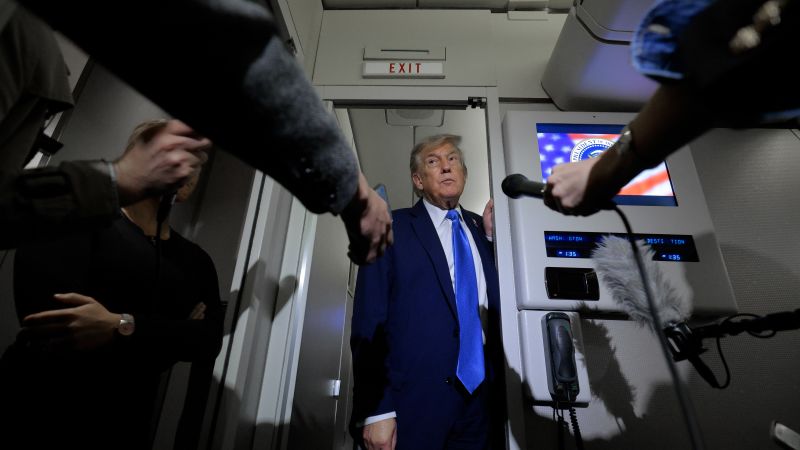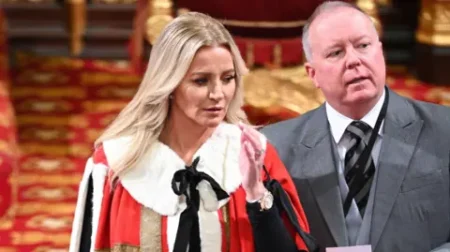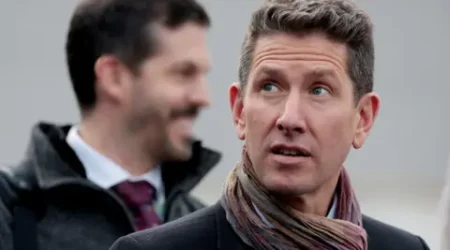When the White House assumed control over the “press pool” that accompanies the American president, many journalists expressed concerns that the Trump administration might weaponize this authority as a means of penalizing particular news outlets. This worry materialized prominently when the Wall Street Journal found itself deprived of a highly valued press seat during President Trump’s impending trip to Scotland. Such actions point toward a broader, concerning trend regarding press freedoms and the government’s handling of media scrutiny.
Initially, it was the Associated Press that felt the weight of the administration’s disapproval, and now the Wall Street Journal has entered the fray. The recent decision, announced by White House Press Secretary Karoline Leavitt, cited “fake and defamatory conduct” from the Journal as the rationale for removing it from the press pool. This rebuke specifically alluded to a report detailing a collection of letters gifted to the controversial figure Jeffrey Epstein for his 50th birthday, with one note bearing Trump’s name, amidst an outline of a naked woman. In response, Trump proactively filed a lawsuit claiming defamation based on the assertion that “no authentic letter or drawing exists.”
The implications of this decision by the White House extend beyond simple journalistic rivalry; it signals a pivotal shift in how access to the president is managed as a tool of retaliation against disfavored media narratives. Previously, responsibilities regarding press pool assignments were determined by the White House Correspondents’ Association (WHCA), an organization that serves as a representative body for the press corps. However, early in the year, Leavitt removed the correspondents’ association from the decision-making process, conferring upon the administration significant leverage over which outlets could gain access and coverage of the president’s activities.
A noteworthy aspect of the press pool is that it typically consists of a select group of journalists tasked with representing the broader media landscape. This arrangement plays a critical role in ensuring coverage of presidential events, which often occur in intimate settings such as Air Force One Q&As or Oval Office photo opportunities. For these reasons, the White House’s unilateral control over such assignments raises valid concerns regarding transparency and fairness in media access.
Leavitt’s exclusion of the WHCA unfolded during a parallel dispute where President Trump insisted on renaming the Gulf of Mexico to the Gulf of America, which sparked tension particularly with journalists at the Associated Press. Despite the AP maintaining its adherence to the traditional naming, it found itself embroiled in a contentious legal battle over press access stemming from Trump’s decree.
In an official statement, Leavitt expressed that press access to the Oval Office, Air Force One, and privileged working spaces is not a guaranteed right for any news outlet, conveying that the administration would opt for a more selective pool for Trump’s trip. Thirteen outlets were enumerated as participating in the press pool for the upcoming voyage, with the Wall Street Journal notably omitted from the list. However, when inquiries arose regarding which outlet would replace the Journal, the White House did not furnish an immediate response.
Reacting to these developments, representatives from the Wall Street Journal declined to comment on the retaliatory actions but reiterated their confidence in the accuracy of their reporting and their commitment to opposing the defamation lawsuit. The president of the WHCA, Weijia Jiang, issued a statement condemning the White House’s actions, asserting that punishing a media outlet due to unfavorable coverage is both troubling and a violation of the First Amendment. Jiang emphasized the importance of government accountability and the necessity of an independent media, urging the White House to reinstate the Journal’s position in the press pool.
In a similar vein, First Amendment advocacy organizations immediately rebuked the administration’s attempts to diminish the Journal’s access, labeling the move as thin-skinned and unconstitutional. Seth Stern, the director of advocacy at the Freedom of the Press Foundation, expressed hope that the Journal’s reporters might now have the opportunity to focus on deeper investigative work, including scrutinizing Trump’s connections with Epstein and the broader implications of press intimidation tactics employed by the government. This evolving landscape underscores the critical balance between governmental authority and press freedoms, a dynamic that continues to spark vigorous national debate.











